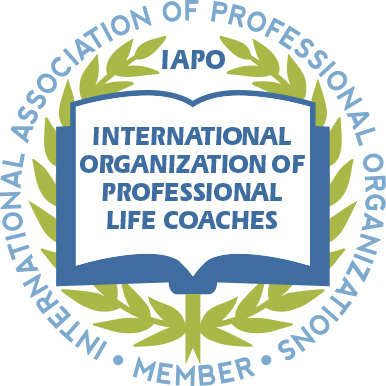Tired of setting goals and not achieving them? Maybe it’s time for a reboot. A new approach and a new mindset. Give yourself permission to dream bigger and make up your mind not to fail. You are going to make it happen this time. Because you will be armed with your own personal “Kick Butt, Life-Changing Personal Development Plan”.
Read on to understand why you need a personal development plan and how to create one.
How to Create Your Own Personal Development Plan
We all have goals and aspirations that we wish to achieve. However, without a plan, it can be challenging to turn those dreams into reality. Then we get discouraged. We feel as though we failed. And it’s hard to start over or try again.
Having a bona fide personal development plan is a game changer.
If you were investing in a business, you would develop a business plan, right?
So, change the paradigm. Decide you’re going to invest in yourself.
That is even more worthy of a plan, isn’t it?
Give yourself the respect you would give your money.
Invest in yourself by creating a personal development plan.
Let’s dive in!
What is a Personal Development Plan?
A personal development plan is a powerful tool that helps us achieve our goals by outlining the actions we need to take to achieve them.
Let’s discuss how to create a personal development plan and the steps we can take to ensure its success.
Step 1: Identify Personal Development Goals
The first step in creating a personal development plan is to identify goals.
These goals should be specific, measurable, attainable, relevant, and time bound.
For example, “losing weight” is not a SMART goal. “Losing 20 pounds by November 2024 through a combination of exercise and healthy diet” is a SMART goal.
“Find a new job” is not a SMART goal. “Start a fulfilling, inspiring job that aligns with my life goals in Field X that provides a minimum salary of Y and benefits of Z by October 2024” is a SMART goal.
We’re all best off when we use the SMART goal-setting framework to help us create effective goals that also allow us to measure progress.
Check out Popular Personal Development Topics to help identify specific personal development goals best suited to you and to learn more about how to set goals that will help to motivate you.
Once you have defined goals, prioritize them based on their level of importance.
Consider how many facets of your life specific goals will impact.
For example, is there a goal on your list that will help improve fitness, health, and mental health?
Perhaps it should be prioritized higher than a goal that will advance your career.
Also consider how difficult different goals may be to achieve.
Also be clear on what your goals are, vs what is a means to an end.
For example, saving money may be a means to an end, but it’s not a goal.
What are you saving money for? What change in your life are you trying to achieve? That’s the real goal.
Focus on figuring out how to quantify those goals – set deadlines for yourself or set mini-goals to achieve over time.
Sometimes it helps to choose a somewhat easier goal to focus on first to reinforce your motivation.
Or to create a whopper: one that consumes you and acts as almost a rite of passage.
Step 2: Assess Your Current Situation
Once you have identified goals, it’s time to assess your current situation.
Where do you stand in relation to your goals?
What skills, knowledge, and resources do you currently possess?
What obstacles are in your way?
By identifying strengths and weaknesses, you can create a plan that addresses areas of improvement.
Developing your own sense of self-awareness is important to doing a realistic self-assessment at this stage.
To read more about self-awareness and why it is so important to personal development, check out Why Self-Awareness is Essential to Personal Growth.
Step 3: Create a Plan of Action
Now that you have identified goals and assessed your current situation, it’s time to create a plan of action.
In this step, you need to determine the actions to take to achieve your goals.
Break these steps down into manageable tasks and assign a timeline for completion.
This is also a good time to consider any obstacles you may face and create contingency plans for overcoming them.
For example, if you are setting a healthy eating goal:
- Do you have all the resources needed to determine what healthy meals you plan to prepare?
- When and where will you acquire all the healthy ingredients you’d like to have on hand?
- Will you be able to get your family to join in and support you?
- If not, how can you potentially bring them around – or budget extra time to prepare different foods?
- What’s your plan to develop a support system to encourage you to achieve this, or any, goal?
Find Tools to Help You Create a Personal Development Plan
Step 4: Implement Your Personal Development Plan
With a plan in place, it’s time to take action.
Begin working on your tasks and track your progress.
Consider incorporating measures such as journaling or working with an accountability partner or mentor to stay on track.
During the implementation phase, you may also discover obstacles you didn’t anticipate, or may realize that you’re unable to measure progress the way you had hoped.
Don’t despair! This happens on any project. We always learn as we go.
And that’s why it’s essential to continually improve your personal development plan, as described below.
Need more encouragement? Check out Motivational Quotes for When You’re Ready to Quit.
Step 5: Review and Adjust Your Personal Development Plan
As we work towards our goals, it’s essential to review and adjust our plan as necessary.
Consider what is working and what isn’t working.
Adjust plans accordingly to ensure success.
Set interim milestones to remind yourself to celebrate your accomplishments and dedication to your plan.
If you’re planning to embark on a plan to achieve a goal, leave a comment so we can all cheer you on.
We all do better when we support one another.
Thank you as always for reading.
If you haven’t yet subscribed, please visit KindCompassCoach and enter your email address so you never miss a post.
As Amazon Associates, we may receive a small commission (at no cost to you) for items purchased through links in this post.

Joan Senio is the founder of KindCompassCoach. Joan’s career includes clinical healthcare plus 20+ years as an executive in a nationwide health care system and 15 years as a consultant. The common threads throughout Joan’s personal and professional life are a commitment to non-profit organizations, mental health, compassionate coaching, professional development and servant leadership. Joan has had the privilege of mentoring early and mid-career professionals as well as current and future executives and leaders. She is a member of the International Organization of Life Coaches, serves as a thought-leader for KuelLife.com and is also a regular contributor to PsychReg and Sixty and Me. You can read more about Joan here: Joan Senio.





One Response
I don’t know why more people don’t apply “business” plans to personal life! SMART goals, personal development plans, SWOT analysis – they can be so helpful on a personal level! Thanks for encouraging this perspective!